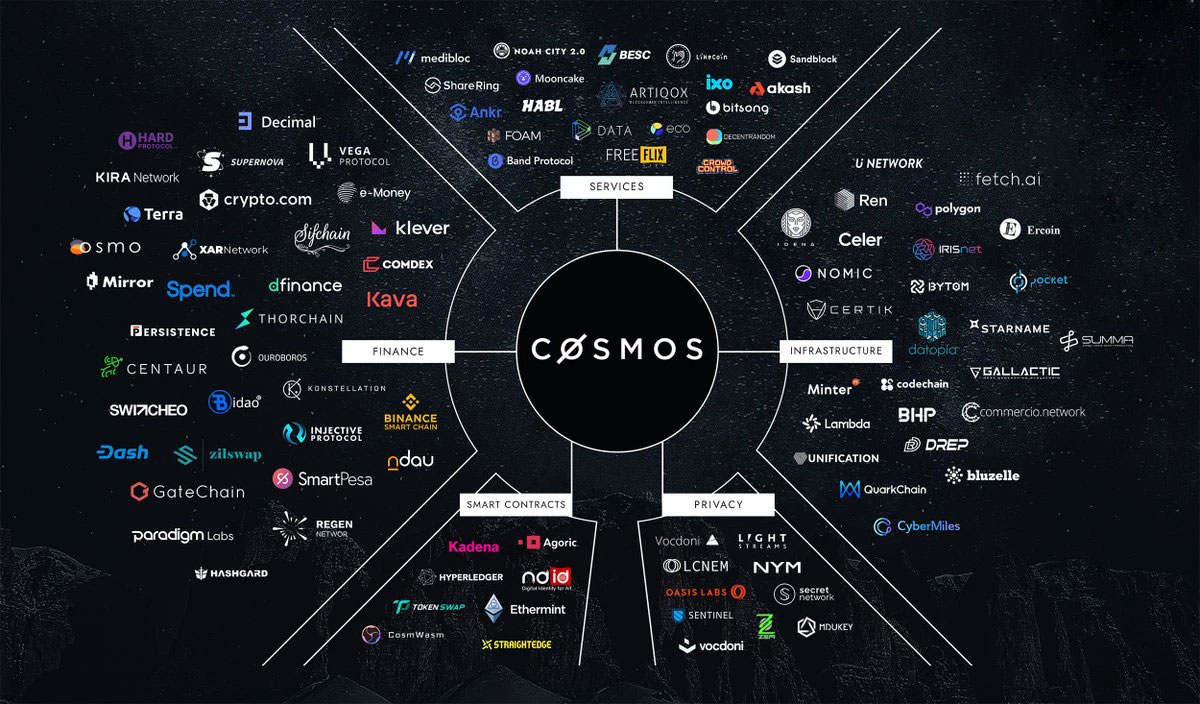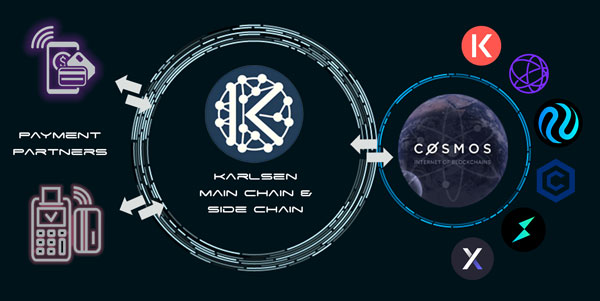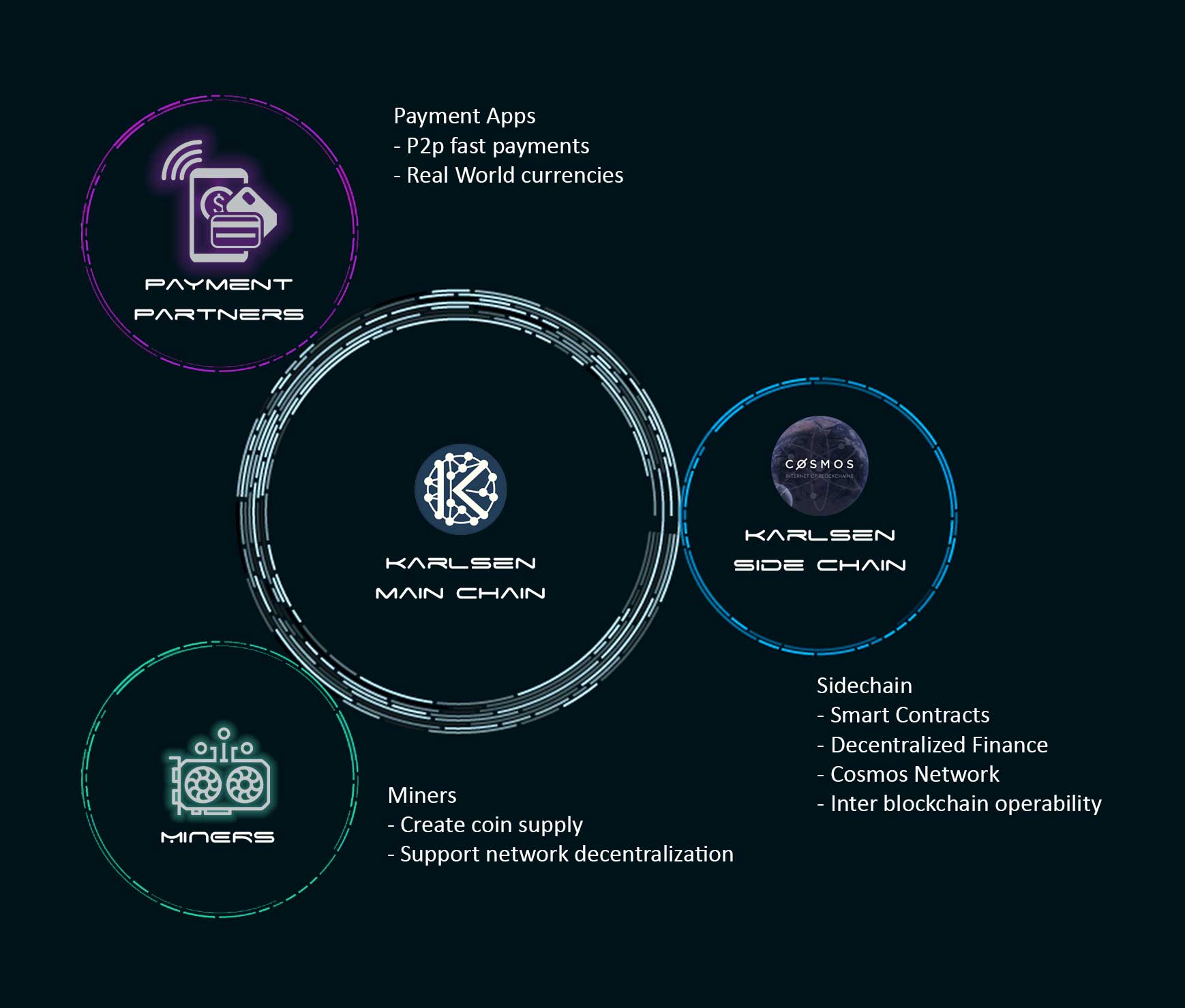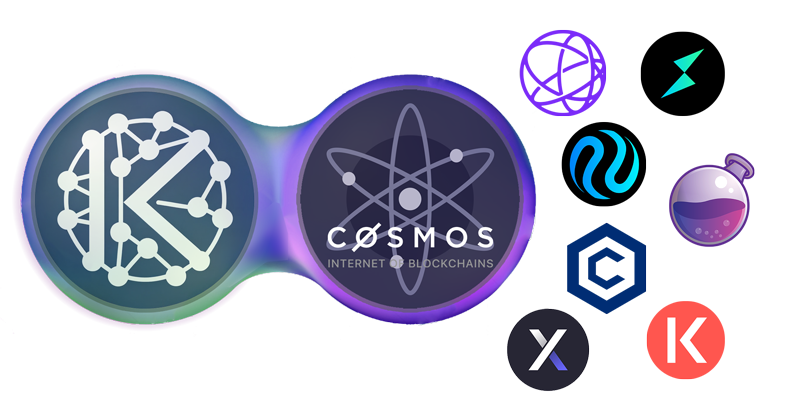
Karlsen Network
Connecting Karlsen to the Cosmos Network

What is Cosmos Hub and why Karlsen Network will connect to it?
Cosmos Hub
Cosmos is a highly attractive ecosystem due to its innovative approach to blockchain interoperability, scalability, and usability. By enabling different blockchains to seamlessly communicate and exchange value, Cosmos opens up vast opportunities for businesses and developers to build and deploy decentralized applications that can operate across multiple blockchain environments. This interoperability fosters a more connected and efficient digital economy, potentially driving adoption and usage across various sectors, including finance, supply chain, and beyond.
By connecting to Cosmos, we will open the door of a web3 ecosystem connected to a complete network of other blockchain projects, making Karlsen Network more competitive and adaptable in the rapidly evolving landscape of decentralized technologies.
Market capitalization
The Cosmos ecosystem represents a total market capitalization of 65 Billion Dollars (02-2024). Integrating Karlsen - a fast and decentralized real world payment solution - could dramatically enhance the latter's value and adoption. Such a large-scale project would not only bring a high volume of transactions, bolstering the payment solution's utility and liquidity, but also lend significant credibility, attracting further users, developers, and investments. The project's extensive network and partnerships could facilitate broader adoption of the payment solution across diverse sectors, while its resources for innovation could improve the payment platform's features and efficiency.
Projects deployed on Cosmos can inject value into the connected BlockDAG-based payment solution by increasing its utilization and transaction volume, thereby contributing to the network's security through higher participation. Moreover, as these projects grow and expand their user bases, they further drive demand for fast, efficient payment solutions, creating a virtuous cycle of mutual growth and value enhancement within the Cosmos ecosystem. This symbiotic relationship underscores the potential of leveraging advanced payment technologies to bolster the utility and attractiveness of decentralized networks.
Financial impact and outcomes for Karlsen
The integration of Karlsen Network into the Cosmos ecosystem is poised to catalyze a diverse range of Web3 developments, leveraging Cosmos's interoperability, scalability, and the innovative BlockDAG payment solution. This environment is ideal for advancing decentralized finance (DeFi) platforms, which could offer faster, more efficient transactions and novel financial instruments.
Targeting the fast payment solution
Karlsen Network project is designed to become a real-world payment solution.
By creating a cosmos compatible sidechain we would leverage the interoperability and scalability features of the Cosmos ecosystem,
alongside the efficiency of the BlockDAG technology, to bridge the gap between traditional financial systems and decentralized finance (DeFi)
Additionally, smart contracts could automate compliance, KYC (Know Your Customer), and AML (Anti-Money Laundering) procedures,
ensuring that the platform adheres to regulatory standards while maintaining the benefits of decentralization.
By connecting a real-world payment solution to the Cosmos-based blockchain, users could enjoy the convenience of traditional payment systems with the transparency, security, and efficiency of blockchain technology, fostering greater adoption of cryptocurrencies in everyday transactions and bridging the divide between conventional finance and the burgeoning world of DeFi.
How we are going to connect to cosmos?
The Karlsen Sidechain
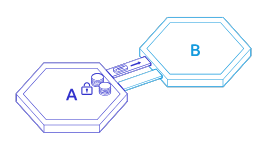
The creation of the Karlsen sidechain with fast transaction times, smart contract capabilities, and a dual coin model, designed to integrate seamlessly with the Cosmos ecosystem and utilize the Karlsen KLS across all interconnected platforms, signifies a strategic advancement in Karlsen Network.
This sidechain will not only enable quick and efficient inter-blockchain transactions but also support complex decentralized applications through its smart contract functionality.
The ability to use Karlsen KLS across the entire ecosystem will ensure a unified and streamlined user experience, promoting greater adoption and utility within the Cosmos network. This sidechain aims to enhance scalability, foster innovation, and provide a flexible and user-centric blockchain solution that meets the diverse needs of developers, users, and investors within the Cosmos ecosystem.
Dual coin model

The dual coin model will introduce a versatile economic structure, with main coin KLS (provided by Miners) serving as the primary medium of exchange and the other (provided by sidechain validators) as a governance token or for staking purposes.
The dual coin model solves the challenge of balancing transaction efficiency with network governance and security, by separating the roles and utilities of each coin within the ecosystem.
Learn more about dual token economy
Read more on dual token models at CoinDesk

Funding of the project
Analysis
The initial analysis and proof of concept phase by the Karlsen core team, it is centered on internal validation of solutions using cosmos SDK and bridge mechanisms. The focus will be on meticulously assessing the viability and effectiveness of these solutions in-house to ensure they meet our standards for speed and interoperability. This inward approach aims to solidify the project's foundation by confirming its technical capabilities and potential for scalability before seeking external funding or partnerships, allowing for a more strategic and informed engagement with potential investors and collaborators in subsequent phases.
Implementation
In the second phase, the project will open a development fund and seek collaborations to accelerate the sidechain's development and launch. This involves securing financial support and partnering with technology experts and other blockchain entities to enhance the sidechain's capabilities, focusing on rapid development, security, and interoperability. The aim is to quickly move from validation to a live, operational state, leveraging external resources and expertise to ensure a successful and timely launch.
